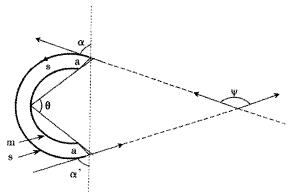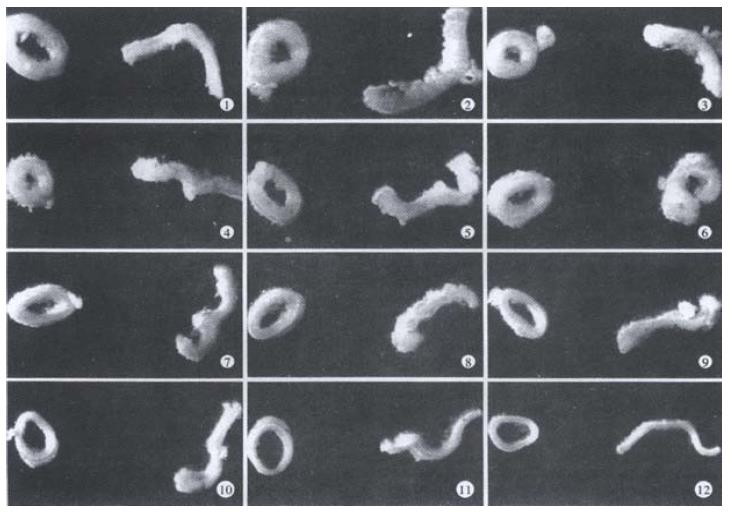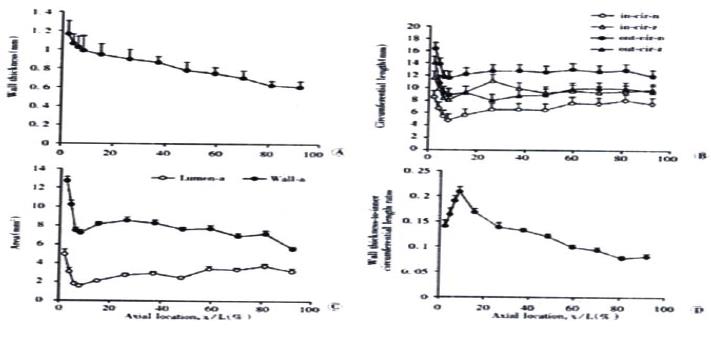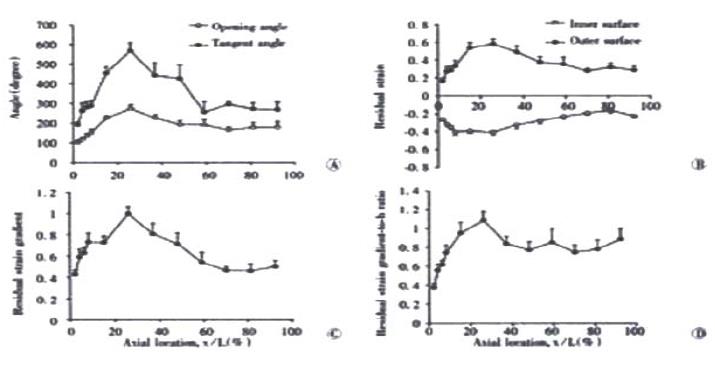Copyright
©The Author(s) 2002.
World J Gastroenterol. Apr 15, 2002; 8(2): 312-317
Published online Apr 15, 2002. doi: 10.3748/wjg.v8.i2.312
Published online Apr 15, 2002. doi: 10.3748/wjg.v8.i2.312
Figure 1 Definition of the zero-stress state.
Traditionally, the zero-stress state is characterized by an opening angle defined as the angle subtended by two radii drawn from the mid-point of the inner wall to the inner tips of two ends of the sector in the zero-stress state. The opening angle is denoted by theta;. The labels m and s denote the mucosal and serosal surfaces and a is the line cutting. The angle between the tip tangents, which is described in the text, is denoted by Ψ. The angles between the tangents at the tip of the sector and the line joining the tips are designated as α and α', respectively. The mean value (α + α')/2 is referred to as the mean tangential angle.
Figure 2 Photographs showing specimens obtained from different locations in the intestine in the no-load state (left, closed rings) and the zero-stress state (right, open sectors).
The rings of jejunum (site 5 to site 8) turned inside out when cut open.
Figure 3 Photographs showing morphometry of rat small intestine including wall thickness in the no-load state (A), inner and outer circuferential length in the no-load state and zero-stress state (B), the wall and lumen area in the no-load state (C) and wall thickness-to-inner circumferential length ratio (D).
Values are S. Variation of all morphometric parameters related to location along the axis of the small intestine was found (P < 0.001).
Figure 4 Photographs showing (A) the distributions of the opening angle and tangent rotation angle, (B) residual strains at the mucosal and serosal surfaces, (C) the residual strain gradient and (D) residual strain gradient normalised with respect to the wall thickness (h).
Values are ¯x ± s. A significant variation was found along the small intestine for all variables (P < 0.001).
- Citation: Zhao JB, Sha H, Zhuang FY, Gregersen H. Morphological properties and residual strain along the small intestine in rats. World J Gastroenterol 2002; 8(2): 312-317
- URL: https://www.wjgnet.com/1007-9327/full/v8/i2/312.htm
- DOI: https://dx.doi.org/10.3748/wjg.v8.i2.312
















